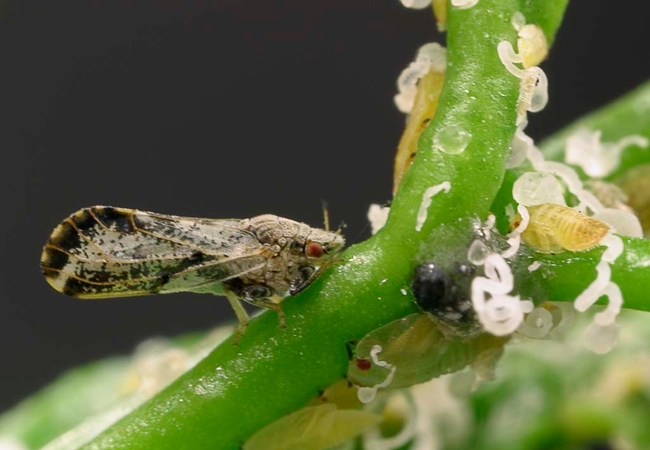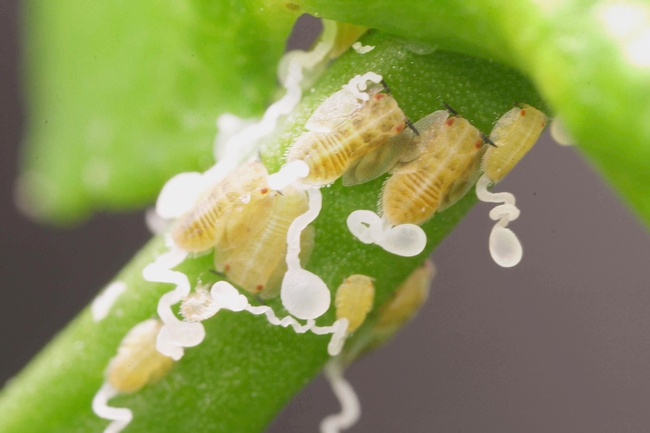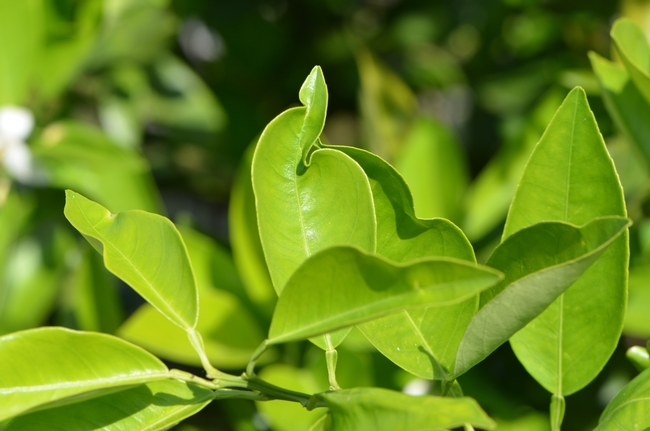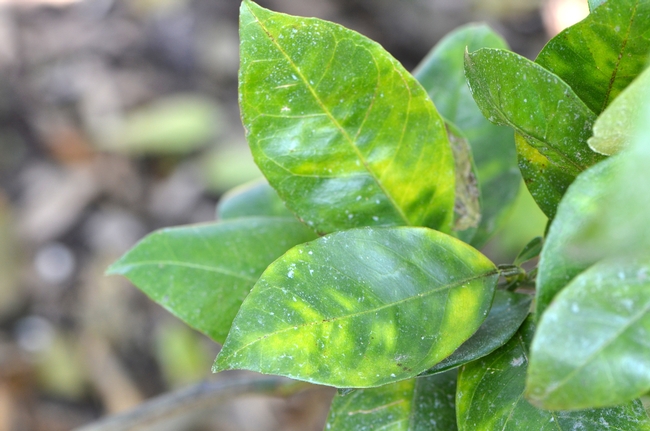
[From the Summer issue of the UC IPM Retail Nursery & Garden Center News]
The incurable?citrus disease huanglongbing (HLB) has been detected in dozens of backyard trees in Los Angeles and Orange counties and most recently in Riverside. The bacterium that causes this disease is spread from tree to tree by Asian citrus psyllids (Figure 1). HLB, also known as citrus greening, has already devastated the citrus trees in Florida, Georgia, Louisiana, South Carolina, and Texas. There is no known treatment for the disease, which usually kills the tree within three to five years.
With this new detection of HLB, it is more crucial than ever to detect infestations of the Asian citrus psyllid. We are providing information about identification and monitoring of the Asian citrus psyllid for you to use when checking your citrus trees.?
What Are Asian Citrus Psyllids?

Check citrus trees and closely related plants monthly. Whenever you see tiny new leaves forming, look closely for signs of the psyllids.?
The best stage to look for is the?nymphs because they don't move very much and their waxy strands are unique. Feeding damage from the nymphs cause the young citrus leaves to twist and curl or cause die back of the new shoots (Figure 3).?
What Does HLB Look Like?

What Can I Do?
We all have a role to play in helping prevent this disease from destroying California's important citrus industry as well as our backyard citrus trees.? If you see any trees that display symptoms of HLB, contact your local?agriculture commissioner or call the California Department of Food and Agriculture (CDFA) Hotline immediately at 1-800-491-1899.
Psyllid Detection and Quarantine

Quarantines help prevent psyllids from being moved to new, uninfested areas of California. Whether you are inside or outside a quarantine area, it is very important to assist with the effort to detect and eradicate the Asian citrus psyllid. Your efforts will reduce the potential for this psyllid to spread HLB and will provide more time for scientists to work on finding a cure for the disease. For maps and information about the current quarantine areas, see the ACP Distribution and Management Web site.
For information on how retail nursery and garden centers can limit and reduce ACP introduction to citrus stock, see the March 2016 edition of the Retail Nursery and Garden Center IPM News.
Resources on Asian citrus psyllid and huanglongbing
UC IPM Pest Notes ipm.ucanr.edu/PMG/PESTNOTES/pn74155.html
ACP/HLB Distribution and Management ucanr.edu/acp
Science for Citrus Health ucanr.edu/sites/scienceforcitrushealth
Newest Detection of Citrus Greening (HLB) is in Riverside ucanr.edu/blogs/blogcore/postdetail.cfm?postnum=24776
UC has boots on the ground in an unrelenting search for Asian citrus psyllid ucanr.edu/blogs/blogcore/postdetail.cfm?postnum=24752
Recognizing the stages of Asian citrus psyllid ucanr.edu/sites/KACCitrusEntomology/files/158632.pdf
Detecting Asian citrus psyllid video youtu.be/QhQXL4bwnXI
Citrus and closely related plants ucanr.edu/sites/ACP/files/169937.pdf